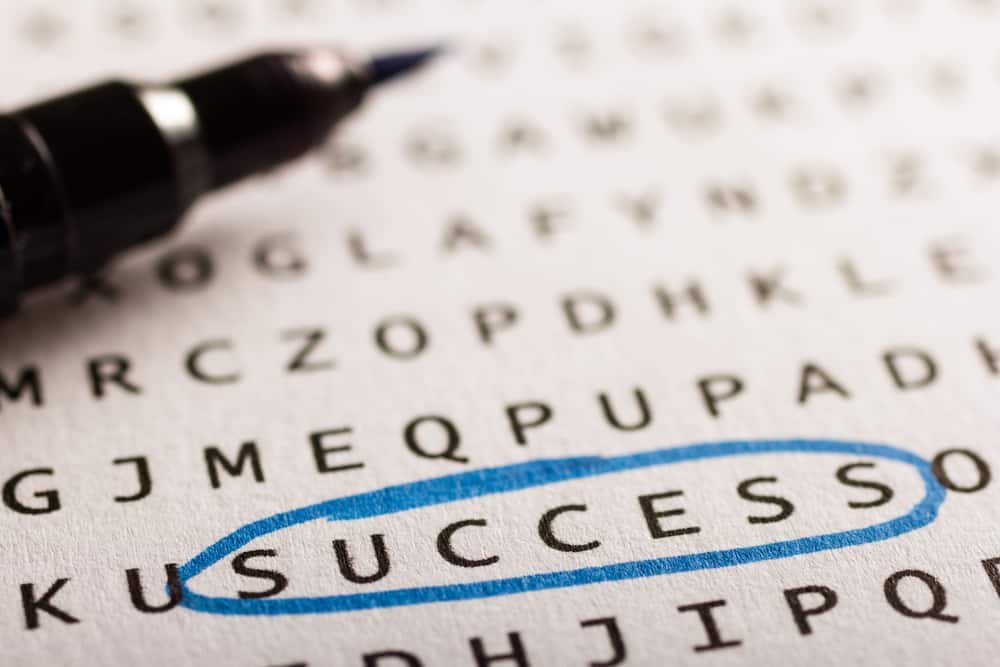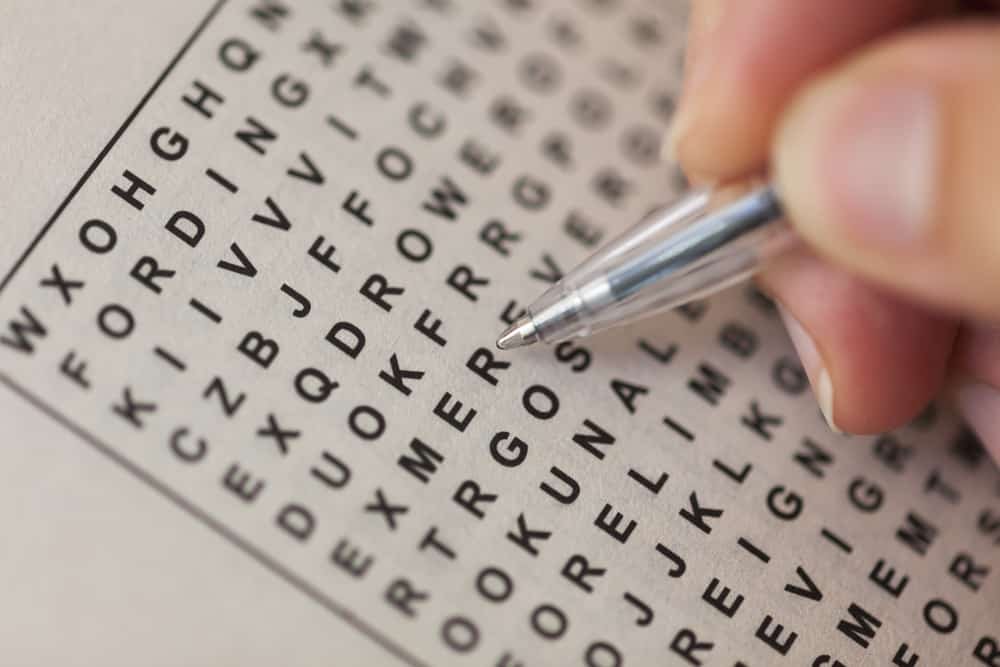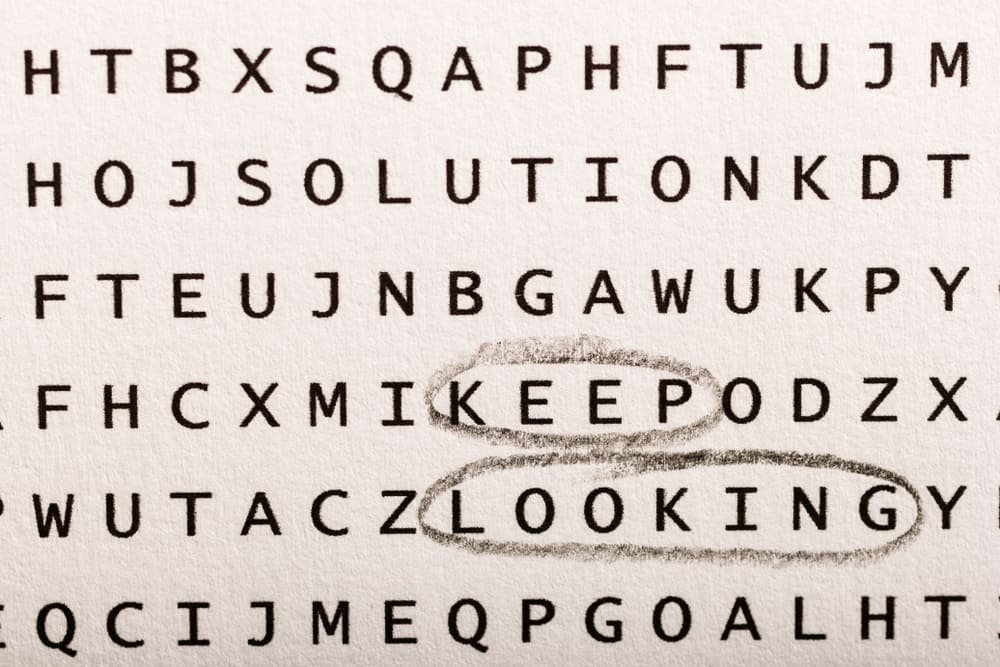Last Updated on January 7, 2024 by Gamesver Team and JC Franco

If you enjoy doing word searches, you probably want to improve on your skills and speed as time goes by. When I first started doing word searches, I remember struggling to find the words amongst the grid of letters. But as the years passed by, my ability to notice patterns improved exponentially, and before I knew it, I was whizzing through word searches with impressive fervor.
Of course, it was not just my pattern recognition skills that spurred on a speedy completion. I had gathered many tricks and strategies along the way that certainly helped.
Back then, I didn’t know that solving a word search puzzle was something that required any kind of strategy! The reality though, is that it does! As a kid, I was not even aware that I was learning different tips and strategies every time I solved a word search puzzle. And as an adult, I have been only too happy to pass them on. If you would like to learn about each of my top tips, tricks, and strategies, read on.
These are 17 Word Search tips, tricks, and strategies:
1. Check the theme and keep it in mind.
Most word searches will have a theme attached. By reading the theme and thinking about it while solving the puzzles, you can expect words that pertain to that theme to stand out to you. It is kind of like getting your mind onto the right thought process/path.
2. Multi-search (search for more than one word at a time).

When you tackle a word search, you might think that a methodical approach is best where you search for one word in the list at a time. This has merit and can work, but it is even easier if you set to memorize a few of the words and then search for them at the same time. Pick 3 words, call them to memory and then hunt the grid for them.
3. Cross words off the list as you discover them.
I have a friend who, in our days of word search weekends, would circle words on the grid as she found them, but would never strike them off the list. About midway through the game, she would always be struck with confusion or going back and forth to figure out if she had indeed found the word. Do not make the same mistake. Cross each of the words off the list as soon as you find them.
4. Guide your eyes with your finger or back of pen/pencil.
You might have noticed this before, but when your eyes have a lot of detail to look at, they might dart here and there without actually taking in all of the information. Guide your eyes along the lines and columns as you go to help them focus and to help the brain focus on what you are doing.
5. Get a new perspective – turn the puzzle upside down.
This might sound a bit bizarre, but if you give your brain a whole new perspective, a word or two might just pop right out at you. You can try this out by turning the word search upside down and scanning it for words.

6. Pay attention to letters that stand out.
Some letters will stand out on a grid easier, such as O, D, Q, and B. Let your eyes quickly find these letters and see if any words form easily around them. By spotting the letters that stand out, you can target certain words on your list quickly.
7. Search for uncommon letters in words.
Some letters are considered “uncommon” because they do not often appear in words. Think about Q, X, Y, K, and Z. If you have words in your list that use these letters, hunt them down on the grid so that you can strike those words off quickly.
8. Search the grid before consulting the word list.
Most people look at the list of words first and then hunt for them on the grid. Another tactic you can use is to look at the grid and see if any words stand out to you. If they do, locate them on the list, circle the word on the grid, and strike the word out on the list.
9. Take a refresher/break when you feel frustrated.
There have often been times where I have been working on hard on a Word Search puzzle and frustration levels are high. You can keep working, but chances are that frustration levels will only rise and your head will become fuzzy, so it is better to take a break. Completely disconnect from the puzzle. Walk away, have a conversation, think about something else entirely, and then only come back when you are feeling more relaxed and ready to work again.

10. Check surrounding letters.
If you find a key letter on the grid that forms part of the word you are looking for, check out the surrounding letters to see if you are on track or if you should move on to the next area on the grid.
11. Look for words with double letters first.
There is no denying that double letters are easier for the eye to see. Scan the grid for double letters and then reference your word list. You can get these words out of the way quickly. I have found that this technique is particularly useful when I am playing a timed round of word search.
12. Get goofy with the word list to save time.
This is something I have always done since I was a kid. Take the words on the list that you are looking for and make up a quick little rhyme or silly sentence. The brain tends to snap onto these sentences and remember them quickly. Once you have that sentence in your mind, you will not have to waste time while consistently checking the word list, because you will be able to easily recall the words from memory.
13. Look for end letters on hard-to-find words.
Sometimes looking for the whole word can be more difficult than trying to find the last few letters. If the word is a hard one to find (perhaps it has unusual spelling), keep an eye open for the last 3 letters of the word. When you spot them, look at the surrounding letters to see if they complete the word.
14. Qs on the grid with no accompanying U can be disregarded.
Checking out the grid for any Q letters is important. If you have a Q letter that is followed by a U, it generally means that it is going to be of some use to you (if it forms part of a word in the list). If you spot a Q letter with no U letter anywhere insight, you can disregard the Q as it probably has no purpose for the word search.
15. Check each row by row.

One strategy to finding words quickly is to go row by row, looking for words.
16. Check each column by column.
Much the same as the point above, you should check column by column for words. The methodical approach will make words stand out quickly.
17. Use different colored highlighters or pencils.
When circling words, the grid can become somewhat busy and confusing. I like to use different colored pens and highlighters so that I can separate words, see where they start and end and try to pick up new words in between them.
Last word
There is an age-old saying that goes “practice makes perfect”, and it really does ring true when it comes to solving word searches. While the abovementioned tips, tricks, and strategies will truly make a difference to your abilities and speed, it is practice that will really cement your progress in the task of word search solving.
With that in mind, put these tips, tricks, and strategies in place and you could be solving word searches in record time! Improve your skills and enjoy the brain work out!

